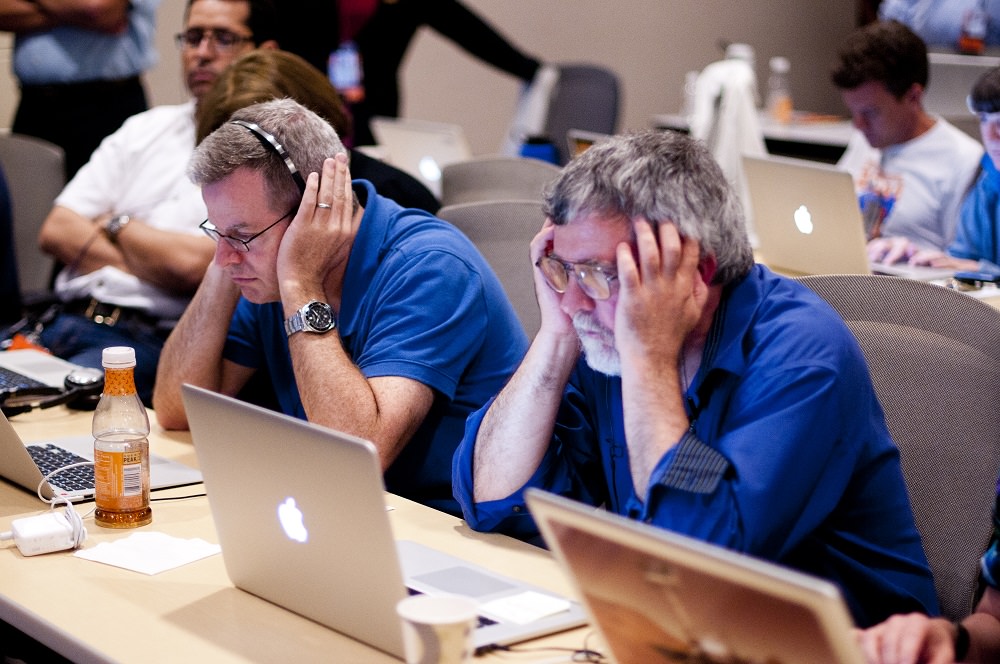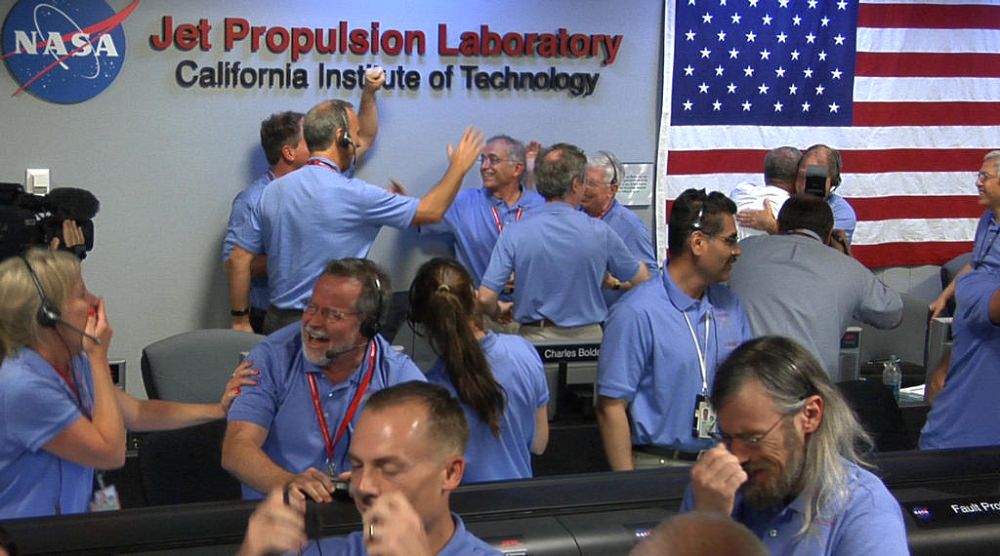If you’ve ever felt overwhelmed by a big project or worried about a new online learning initiative turning into a big failure, leave it to a rocket scientist to put things into perspective for you.
Imagine having to safely land a 2,000-pound, $2.5 billion rover on Mars after it hurtled 354 million miles through space and plunged into Mars’ atmosphere at 13,200 miles an hour. You have to wait eight long months to see if your team’s invention really works. And if it fails, the entire world is watching. A dud program doesn’t seem so bad now, does it?
Last week at the ASAE Technology Conference, we heard Adam Steltzner, chief engineer of entry, descent, and landing systems for the Jet Propulsion Laboratory, talk about his team’s experience coming up with a landing solution for NASA’s Mars Curiosity rover. Curiosity is a fitting name because Steltzner said there are few limits to what your team can achieve if you build a culture of curiosity and collaboration at your association.
Tap into your curiosity to spark innovation.
“The curious mind stays agile, innovative, and competitive,” said Steltzner. If associations are to thrive amidst growing competition in the lifelong learning market, you need to cultivate these three qualities in yourself and your professional development team. Curiosity is in our genes, but if we only follow best practices, traditions, and routines, we could get stuck in a rut and repress our curiosity.
See where your curiosity takes you—one day it may take you to a transformative idea. Curiosity is a main driver of creativity. And, believe it or not, constraint is another driver of creativity—so your limited resources can actually be an advantage when it comes to creativity.
Curiosity can lead you to uncomfortable places, but that’s okay. Steltzner suggests reigniting your curiosity by asking different questions, scary questions, and even provocative questions. Sometimes the questions we start with aren’t the ones that will lead us to the best answer.
Ask questions but don’t rush the answers. Steltzner says to roll open questions around in your brain. Sit with them a while. You’ll come up with better answers when you refine and better understand your questions.
Put your ideas into mortal combat.
After you’ve refined your questions and given your team time to roll them around in their brains, you can start talking about solutions. Steltzner’s team at the Jet Propulsion Laboratory had “open and judgment-free” brainstorming sessions to come up with possible solutions for the landing system.
Steltzner said there is no such thing as a bad idea: “Great works and great folly may be indistinguishable at the outset.” But for people to feel comfortable sharing and discussing ideas, they must feel respected and know their voice will be heard. The stronger the teamwork and collaboration, the stronger the resulting product will be.
He told his team: “If they wanted to bring a solution into discussion within the team, to show up with the three central arguments for that solution and the three central arguments against that solution.” This approach helps people separate themselves from their own ideas, and helps their colleagues see them as separate from those ideas. Everyone has to be willing to give and accept a critical review of all ideas, including their own.
You have to let ideas, not egos, compete against each other. Everyone must separate the ideas from the people who hold them. “When you separate them, you allow the ideas to engage in a much more effective combat and competition.”
Be willing to embrace fear and failure.
“You’ve got to make an environment that’s safe for people to experiment. And when you do, that engages them more,” said Steltzner. “It connects them with their curiosity…And so, you really get a more engaged, and I think a more productive and effective organization.”
The biggest inhibitor to curiosity and experimentation is not usually a critical colleague but a person’s own fear—fear of failure and blame. Thinking about your own organization, is that a rational fear? Unfortunately, in many organizations, it is. How can you develop a culture of experimentation where failure is seen as a learning opportunity and not something worthy of blame?
During experimentation, things can turn out well or go south in a hurry. You can end up in what Steltzner calls the “dark room” where you see no way out, no answers, and no path forward. In this anxious state, fear and uncertainty allow an individual and/or collective creative block to settle in.
To get out of this dark room and to do your best work, he said you must allow yourself to be vulnerable and to accept that things will be uncomfortable before you break out again into the light and the potential it promises. You have to be willing to let go of your ego (personal and departmental) and assumptions, be willing to hear and see the truth, and be willing to fail and bear the discomfort that brings.
You also have to be willing to admit that your great idea is not always the right choice. “As a leader, you need to check your ego. Because being right is not nearly as important as finding right,” he said.
Cultivate the right kind of crazy.
Steltzner wrote a book with a title that sums up his approach to challenges: The Right Kind of Crazy: A True Story of Teamwork, Leadership, and High-Stakes Innovation. He said:
“The right kind of crazy is that process by which we bring all of ourselves, all of our creativity, all of our openness, to new and novel solutions, all that we understand about the constraints, and we take our best shot.”
Straight from the mouth of a rocket scientist, that could be your department’s new mission statement. Or, as the captain of the starship Enterprise might have said: your team must be willing to explore strange new worlds, to seek out new ideas and new strategies, and to boldly go where no professional development program has gone before.









